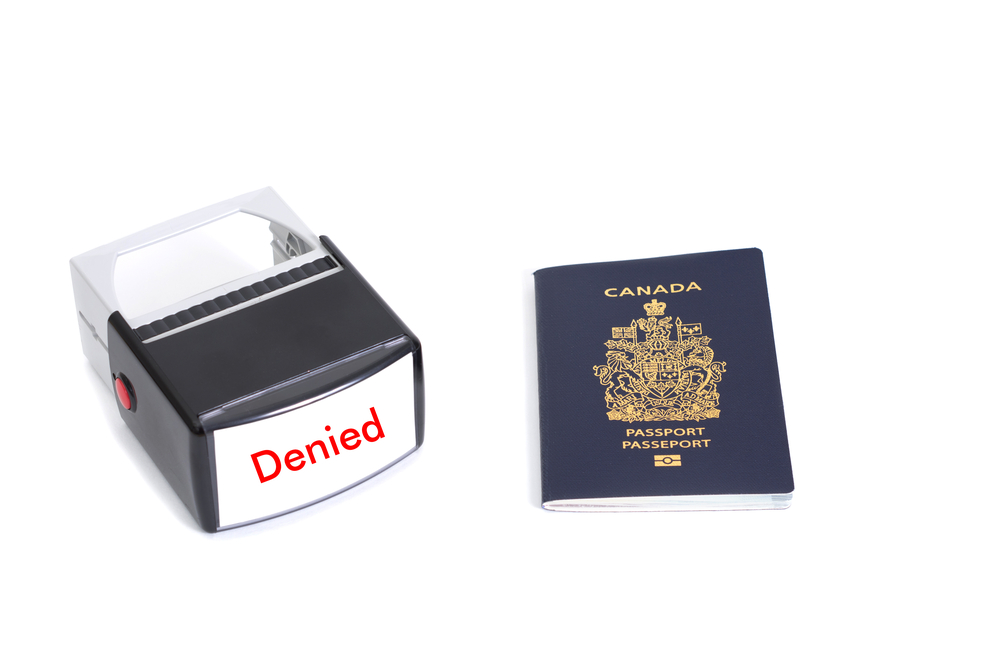Canada Express Entry System
If you’re considering immigrating to Canada, you’ve probably heard of the Express Entry system. This system is designed to make the immigration process faster and more efficient for skilled workers who want to live and work in Canada. However, navigating the Express Entry system can be confusing and overwhelming, especially if you’re not familiar with the Canadian immigration process. That’s why we’ve put together this step-by-step guide to help you understand how the Express Entry system works and how you can increase your chances of being selected for permanent residency in Canada. So, let’s get started!
Express Entry Overview
Let’s start our journey with an Express Entry overview. What exactly is this system, you ask? Well, think of it as Canada’s way of rolling out the welcome mat to skilled workers from around the world. It’s like an exclusive invitation to join the Canadian family.
You see, Canada’s Express Entry system is like a finely-tuned machine, designed to streamline the immigration process. It’s all about efficiency, making it easier for qualified individuals like you to become permanent residents. But how does it all work?
What is Express Entry?
Express Entry is a Canadian immigration system that was introduced by the government of Canada in 2015 to manage the applications for permanent residence through economic immigration programs. It is a points-based system designed to select candidates who are likely to succeed economically in Canada. The key economic immigration programs managed through Express Entry include the Federal Skilled Worker Program, the Federal Skilled Trades Program, and the Canadian Experience Class.
How Does Express Entry Work?
Express Entry is a comprehensive and points-based system designed to manage the immigration applications of skilled workers who want to become permanent residents of Canada. The process involves several key steps:
1. Eligibility Assessment:
- Programs: Determine eligibility for one of the three main economic immigration programs managed through Express Entry: Federal Skilled Worker Program (FSWP), Federal Skilled Trades Program (FSTP), or Canadian Experience Class (CEC).
- Requirements: Ensure you meet the specific requirements for the chosen program, including work experience, education, language proficiency, and other criteria.
2. Language Proficiency and Educational Credential Assessment (ECA):
- Language Test: Take an approved language proficiency test (English or French) and obtain the required minimum scores.
- Educational Credential Assessment: If educated outside of Canada, get your credentials assessed to confirm their equivalence to Canadian standards.
3. Create an Express Entry Profile:
- Online Profile: Create a profile on the Express Entry system, providing detailed information about your skills, work experience, language proficiency, education, and other relevant factors.
- Comprehensive Ranking System (CRS): The system assigns a CRS score based on the information provided.
4. Ranking in the Express Entry Pool:
- Regular Draws: Periodically, the government conducts draws from the Express Entry pool, inviting candidates with the highest CRS scores to apply for permanent residence.
- CRS Cutoff: The CRS cutoff score is the minimum score required to receive an Invitation to Apply (ITA).
5. Job Bank Registration (Optional):
- Job Seeker Validation Code: If eligible, candidates can register with the Job Bank and receive a Job Seeker Validation Code, which can be included in the Express Entry profile to connect with potential employers.
6. Provincial Nomination (Optional):
- Nomination by a Province: Some provinces and territories in Canada have their own immigration programs. If nominated by a province through a Provincial Nominee Program (PNP), candidates receive additional CRS points.
7. Receiving an Invitation to Apply (ITA):
- Express Entry Draws: Candidates with CRS scores above the cutoff in a particular draw receive an ITA.
- ITA Validity: Once issued an ITA, candidates typically have 60 days to submit a complete application for permanent residence.
8. Submission of Permanent Residence Application:
- Online Application: Submit a complete application for permanent residence through the online system, including supporting documents.
- Biometrics and Medical Exam: Complete necessary biometrics and medical examinations.
9. Processing and Final Decision:
- Background Check: The application undergoes a thorough background check by Immigration, Refugees, and Citizenship Canada (IRCC).
- Decision: If everything is in order, and the applicant meets all criteria, IRCC makes a final decision on granting permanent residence.
10. Landing in Canada:
- Confirmation of Permanent Residence (COPR): Upon approval, applicants receive a Confirmation of Permanent Residence (COPR).
- Travel to Canada: Use the COPR to travel to Canada and complete the landing process.
Express Entry is known for its efficiency in processing applications and selecting candidates with the skills and attributes needed to contribute to the Canadian economy. The system is dynamic, and candidates can take steps to improve their CRS scores to enhance their chances of receiving an ITA.
What are targeted Express Entry draws?
Targeted Express Entry draws, also known as program-specific draws, are a variation of the regular Express Entry draws conducted by the Canadian government. In these draws, the government specifically targets candidates with certain characteristics or qualifications that align with the needs of particular provinces, territories, or employers in Canada. The goal is to address specific labor market or economic priorities and attract individuals who possess skills or experience in high-demand sectors.
Here’s how targeted Express Entry draws work:
- Identification of Specific Criteria:
- Before a targeted draw, the government identifies specific criteria or qualifications that align with the current economic or labor market needs of a particular province, territory, or employer.
- Inviting Candidates Meeting Specific Criteria:
- During the draw, candidates in the Express Entry pool who meet the identified criteria are invited to apply for permanent residence.
- The criteria may include occupation-specific skills, experience in a particular industry, proficiency in a specific language, or other qualifications.
- Focused Selection:
- Unlike regular draws, where candidates are selected based on their overall Comprehensive Ranking System (CRS) scores, targeted draws focus on specific attributes or qualifications deemed valuable by the targeted province, territory, or employer.
- Provincial Nominee Programs (PNPs):
- Targeted draws are often associated with Provincial Nominee Programs (PNPs), where provinces and territories nominate candidates directly from the Express Entry pool who meet their specific needs.
- A provincial nomination comes with additional CRS points, significantly increasing a candidate’s chances of receiving an Invitation to Apply (ITA) in a subsequent Express Entry draw.
- Employer-Specific Draws:
- In some cases, targeted draws may be initiated to address the needs of specific employers in Canada. Express Entry candidates with job offers from these employers may be invited to apply.
- Enhanced Provincial Nomination Streams:
- Some provinces have enhanced Provincial Nomination Streams within their PNP, which allow them to directly select candidates from the Express Entry pool who meet certain criteria.
- Benefits for Candidates:
- Candidates selected in targeted draws benefit from a streamlined immigration process, as their qualifications closely match the specific needs of the province, territory, or employer.
- Flexibility in Criteria:
- The criteria for targeted draws can vary, and they may change based on the evolving economic priorities of different regions or industries in Canada.
Targeted Express Entry draws enhance the adaptability of the immigration system, allowing it to respond to changing economic demands. These draws align with the Canadian government’s strategy to attract skilled workers who can contribute directly to the growth and development of specific regions and industries within the country.
How long does the Express Entry process take?
The Express Entry process can take anywhere from six months to two years, depending on the complexity of your application and the current immigration processing timesWhat are the pros and cons of Express Entry?
Every coin has two sides, and so does the Express Entry system. So, what are the pros and cons you should be aware of? On the positive side, it’s a straightforward process that doesn’t always require a job offer.
Plus, it offers access to various Canadian provinces. On the flip side, it’s a competitive process, and the application fees can add up. Knowing these pros and cons helps you make an informed decision.
How much does Express Entry cost?
The cost of the Express Entry process can vary depending on the specific program you are applying for, but it typically includes the following fees:
-
Express Entry profile fee: CAD$225
-
Language test fees: CAD$250-CAD$400 per test
-
Biometrics fee: CAD$85
-
Permanent residence application fee: CAD$1,325
In addition to these fees, you may also need to pay for additional services, such as document translation, legal assistance, and medical examinations.
Do I need to hire a lawyer for Express Entry?
You do not need to hire a lawyer to apply for Express Entry, but it is highly recommended to do so. A lawyer can help you with the following:
- Reviewing and preparing your Express Entry profile.
- Maximizing your CRS score.
- Submitting your application for permanent residence.
- Advising you on any changes to the Express Entry system.
- Representing you at Canadian immigration hearings.
However, some applicants choose legal representation for added peace of mind. It’s like deciding whether to navigate a new city with or without a GPS.
Do I need a Canada job offer under Express Entry?
Here’s a common question: Do I need a Canada job offer under Express Entry? The short answer is no, it’s not always required. However, having a job offer can significantly boost your points and improve your chances of success. It’s like having a golden ticket in your hand; it makes the journey smoother.
Do Express Entry immigrants find good jobs in Canada?
A burning question for many prospective immigrants is, “Do Express Entry immigrants find good jobs in Canada?” The answer is a resounding yes! The Express Entry system is tailored to attract individuals with valuable skills and experience.
Canadian employers are often on the lookout for such candidates to fill critical positions, making it highly likely for Express Entry immigrants to secure good jobs in the country.
What sort of backgrounds do Express Entry immigrants have?
Now, let’s explore the diversity of Express Entry immigrants’ backgrounds. Canada prides itself on being a multicultural nation, and its Express Entry program reflects this. Immigrants who successfully navigate the system come from various professional backgrounds, including information technology, healthcare, engineering, and more. Your unique skills and qualifications can find a place here.
Can my family come with me under Express Entry?
Yes, under the Express Entry system, you can include your family members in your application for permanent residence in Canada. The family members you can include are:
- Spouse or Common-Law Partner:
- You can include your spouse (legally married) or common-law partner (living together in a conjugal relationship for at least one year).
- Dependent Children:
- You can include your dependent children in your application. Dependent children must be under a certain age and meet specific criteria to be considered eligible. The age limit for dependent children was increased to 21 years as of October 24, 2017. However, it’s essential to check for any updates to this criterion as policies may change.
When submitting your Express Entry profile, you will need to provide information about your family members, including their names, dates of birth, and relationships to you. If you receive an Invitation to Apply (ITA) for permanent residence and proceed with the application, you’ll include the necessary details and documentation for your family members at that stage.
Express Entry Eligibility and CRS Score
Am I Eligible for Express Entry?
If the allure of living in Canada has captured your imagination, you’ve likely found yourself asking the pivotal question: Am I eligible for Express Entry? This inquiry marks the first step on your journey toward becoming a permanent resident in the Great White North. Let’s unravel the eligibility criteria, ensuring you have a clear roadmap to your Canadian dream.
Express Entry serves as a gateway for skilled workers from around the world, but not everyone meets the requirements. To determine your eligibility, consider the following factors:
- Skilled Work Experience: Express Entry favors individuals with skilled work experience. Specifically, the Canadian government looks for experience in occupations classified under the National Occupational Classification (NOC) system.
- Educational Qualifications: Your education plays a significant role. Having a degree, diploma, or certificate from a recognized Canadian institution can earn you valuable points.
- Language Proficiency: English and/or French language skills are crucial. You’ll need to take a language test to assess your proficiency. Achieving higher scores can substantially boost your eligibility.
- Age: Express Entry considers your age. Younger candidates often earn more points in this category.
- Adaptability: Your ability to adapt to Canadian life, such as having family members in Canada or previous Canadian work or study experience, can enhance your eligibility.
Once you’ve assessed these factors, you can use the official Come to Canada tool on the Canadian government’s website to get a better understanding of your eligibility. This tool will ask you a series of questions and provide feedback on your suitability for Express Entry.
Read – How Can I Find Affordable Housing Before I Arrive In Canada?
What Canadian Immigration Options Do I Have?
Canada beckons with its breathtaking landscapes, diverse culture, and abundant opportunities, making it a dream destination for many. Once you’ve pondered your eligibility for Express Entry, the next logical question is, “What Canadian immigration options do I have?”
Canada offers several pathways to immigration, catering to various circumstances and goals. Let’s explore some of the key options:
- Express Entry: As we’ve discussed, Express Entry is a points-based system for skilled workers. It’s the primary route for economic immigration and leads to permanent residency.
- Provincial Nominee Program (PNP): Each Canadian province and territory has its own PNP, offering nomination opportunities for individuals with specific skills and connections to that region. If you’re interested in settling in a particular province, this could be a viable route.
- Family Sponsorship: If you have close relatives who are Canadian citizens or permanent residents, they may be able to sponsor you for immigration, particularly under the Family Class sponsorship program.
- Study Permits: If you wish to pursue higher education in Canada, you can apply for a study permit. Upon graduation, you may be eligible for a post-graduation work permit, which could lead to permanent residency.
- Temporary Work Visas: Temporary work visas, such as the International Mobility Program and the Temporary Foreign Worker Program, allow you to work in Canada for a specific period. In some cases, these experiences can serve as a stepping stone to permanent residency.
It’s essential to select the immigration pathway that aligns with your qualifications, goals, and circumstances. Each program has specific requirements and processes, and seeking professional guidance or using the official tools and resources provided by the Canadian government can help you make an informed choice.
How Can I Calculate My Express Entry CRS Score?
Now that you’ve explored your Canadian immigration options, let’s turn our attention to a critical aspect of the Express Entry System: understanding and calculating your Comprehensive Ranking System (CRS) score.
Your CRS score plays a pivotal role in determining your eligibility and ranking among Express Entry candidates. So, you might be wondering, “How can I calculate my Express Entry CRS score?” We’re here to guide you through the process:
CRS Score Components
Your CRS score is calculated based on various factors, each assigned a specific point value. Here’s a breakdown of the key components:
1. Core Human Capital Factors (Maximum 600 points)
- Age: The younger you are, the more points you can earn.
- Education: Points are awarded based on your level of education, with higher degrees earning more points.
- Language Skills: Proficiency in English and/or French is crucial. You’ll need to take a language test, such as the IELTS or CELPIP for English or the TEF for French, to assess your abilities. Higher scores equate to more points.
- Work Experience: Skilled work experience in Canada or abroad is valued. The more years of experience you have, the more points you can earn.
2. Additional Factors (Maximum 600 points)
- Canadian Degrees or Diplomas: Having a Canadian educational credential can earn you additional points.
- Language Proficiency in French: If you’re bilingual in English and French, you can gain extra points.
- Siblings in Canada: Having a brother or sister who is a Canadian citizen or permanent resident can boost your score.
- French-Language Skills of Your Spouse or Partner: If your spouse or partner is proficient in French, it can earn you additional points.
3. Skill Transferability Factors (Maximum 100 points)
These factors consider the combination of your education, language skills, and work experience to assess your adaptability to the Canadian job market.
Calculate Your CRS Score
Calculating your CRS score involves adding up the points you earn in each of these categories. Keep in mind that a valid job offer from a Canadian employer or a provincial nomination can significantly boost your score.
To get a precise estimate of your CRS score, you can use the official CRS calculator on the Government of Canada’s website. This tool allows you to input your information, and it will provide you with a breakdown of your score based on the information you provide.
Regular Draws and Minimum CRS Scores
Express Entry draws are conducted at regular intervals, typically every two weeks. The Canadian government sets a minimum CRS score requirement for each draw. If your score meets or exceeds this minimum, you’ll receive an Invitation to Apply (ITA) for permanent residency.
Understanding your CRS score is crucial, as it helps you assess your chances and identify areas where you can improve your ranking. In the next sections, we’ll explore strategies to enhance your CRS score.
How Can I Improve My Express Entry CRS Score?
As you’ve embarked on your journey to understand the Express Entry system and calculate your Comprehensive Ranking System (CRS) score, you might be wondering, “How can I improve my Express Entry CRS score?”
Elevating your CRS score can significantly enhance your chances of receiving an Invitation to Apply (ITA) for Canadian permanent residency. Let’s explore strategies to boost your score:
1. Language Proficiency Enhancement
Improving your language skills is one of the most effective ways to increase your CRS score. Consider the following steps:
- Retake Language Tests: If your language test results are below your desired CLB (Canadian Language Benchmark) level, consider retaking the test to achieve a higher score.
- Enhance Speaking Skills: Focus on improving your speaking abilities, as the speaking component often carries significant weight in language assessments.
- Bilingualism: If you’re proficient in both English and French, you can earn additional points. Invest in learning or improving your second official language skills.
2. Further Education
Investing in your education can yield more CRS points:
- Pursue Post-Secondary Studies: Consider enrolling in a post-secondary program in Canada to earn additional points.
- Credential Assessment: Ensure your foreign credentials are assessed and recognized in Canada. Having your qualifications evaluated can lead to more points.
3. Gain More Work Experience
Accumulating more skilled work experience is another strategy:
- Continue Working: Extend your current employment to gain more years of skilled work experience.
- Switch Jobs: Changing jobs within the same occupation can also contribute to increased experience.
- Work in Canada: If possible, work in Canada, as Canadian work experience is particularly valuable.
4. Provincial Nomination or Job Offer
Securing a Provincial Nomination (PN) or a valid job offer in Canada can significantly boost your CRS score:
- Explore Provincial Nomination Programs: Some provinces have streams that provide additional points for those nominated by that province.
- Job Offer: A valid job offer from a Canadian employer can contribute substantial CRS points, depending on the type of offer.
5. Siblings in Canada
If you have a sibling who is a Canadian citizen or permanent resident, you can earn additional CRS points. Consider staying connected with your sibling and maintain documentation to prove the relationship.
6. Adaptability Factors
Maximize your points through adaptability factors:
- Spousal Language Skills: If your spouse or common-law partner is proficient in English or French, have them take a language test to earn additional points.
- Canadian Work Experience: If you have previous Canadian work experience, make sure it’s documented for assessment.
7. Stay Informed
The Express Entry system undergoes occasional updates. Stay informed about the latest changes in the CRS scoring system, eligibility criteria, and draw trends. Adapt your strategy accordingly to maximize your CRS score.
Remember, while increasing your CRS score is important, it’s just one aspect of your Express Entry journey. Continue to explore other sections of our comprehensive guide for valuable insights into the Express Entry process, from eligibility to the application procedure.
Your Canadian dream is attainable, and proactive steps to improve your CRS score can bring you closer to achieving it.
Read – Discover Top 10 High Demand Jobs in Canada 2024: No Certificates Needed!
What Is the Difference Between Express Entry and the PNP?
When navigating the Canadian immigration landscape, you’ll likely encounter two prominent pathways: Express Entry and the Provincial Nominee Program (PNP). Understanding the differences between these programs is essential to make informed decisions about your immigration strategy:
Express Entry
Express Entry is a federal immigration program that manages applications for permanent residency from skilled workers. Here are some key features:
- Federal Programs: It encompasses three federal economic immigration programs: the Federal Skilled Worker Program (FSWP), the Canadian Experience Class (CEC), and the Federal Skilled Trades Program (FSTP).
- Point-Based System: Express Entry operates on a Comprehensive Ranking System (CRS), where candidates are awarded points based on factors such as age, education, work experience, language proficiency, and more.
- Nationwide Eligibility: Express Entry candidates can apply from anywhere in the world, regardless of the specific province or territory they intend to settle in.
- Regular Draws: The Canadian government conducts regular Express Entry draws, inviting candidates with the highest CRS scores to apply for permanent residency.
Provincial Nominee Program (PNP)
Provincial Nominee Programs (PNPs), on the other hand, are immigration programs designed by individual provinces and territories in Canada. Here’s how they differ from Express Entry:
- Provincial Control: Each province and territory in Canada has its own PNP, allowing them to select and nominate individuals who meet their specific economic and demographic needs.
- Express Entry and Non-Express Entry Streams: Some PNPs are aligned with the Express Entry system, allowing candidates to receive a provincial nomination and gain extra CRS points. Others have non-Express Entry streams, where candidates apply directly to the province or territory.
- Occupation-Specific: Some PNPs target specific occupations or industries that are in demand within the province or territory.
- Regional Focus: PNPs often have a regional focus, aiming to distribute immigrants across different areas of Canada to support economic development.
What Makes a Job Offer Valid Under Express Entry?
A valid job offer under the Express Entry system can significantly boost your CRS score and enhance your eligibility for permanent residency. Here are the key criteria for a job offer to be considered valid:
- Full-Time and Permanent: The job offer must be for a full-time, permanent position in Canada.
- NOC Code: The job must fall under a specific National Occupational Classification (NOC) code.
- LMIA or LMIA-Exempt: The employer must have either obtained a Labor Market Impact Assessment (LMIA) from Employment and Social Development Canada (ESDC) or offer a job that is LMIA-exempt.
- Duration: The job offer must be for at least one year from the date of your expected arrival in Canada.
- Continuous: You must be able to demonstrate that the job offer is genuine and that you and the employer intend for it to be continuous.
- At Skill Level: If your job offer is outside of Canada, it must be in an occupation at skill level 0, A, or B of the NOC.
Understanding the differences between Express Entry and the PNP, as well as the criteria for a valid job offer, is crucial as you plan your immigration journey to Canada. Each pathway has its advantages and considerations, and choosing the right one depends on your unique circumstances and goals.
Continue to explore our comprehensive guide for more insights into the Express Entry process and strategies for success. Your Canadian dream is closer than you think!
Which Express Entry Job Offers Are Exempt from Requiring an LMIA?
When exploring job offers under the Express Entry system, it’s essential to understand which job offers are exempt from requiring a Labor Market Impact Assessment (LMIA).
An LMIA is a document that demonstrates the employer’s efforts to hire a Canadian citizen or permanent resident before offering a job to a foreign national. Exempt job offers simplify the immigration process. Here are some common categories of job offers that are LMIA-exempt:
- Intra-Company Transfers: If you are being transferred to Canada within the same company, you may be eligible for an LMIA exemption.
- Trade Agreements: Certain international trade agreements, such as the North American Free Trade Agreement (NAFTA) or the Comprehensive Economic and Trade Agreement (CETA), provide LMIA exemptions for specific job categories.
- Reciprocal Employment: In some cases, Canadians and permanent residents working abroad can return to Canada under LMIA-exempt job offers.
- Provincial Nominee Program (PNP) Nominations: If you receive a provincial nomination through a PNP stream aligned with Express Entry, your job offer may be exempt from an LMIA.
- Significant Benefit to Canada: If your work in Canada is deemed to provide a significant benefit to the country, you may not require an LMIA.
- Research or Academic Positions: Jobs related to research or academia may be exempt if they meet certain criteria.
It’s important to note that the specific requirements and eligibility criteria for LMIA exemptions can vary based on your unique circumstances, the province or territory you plan to work in, and the nature of your job offer.
Consult with immigration authorities or legal professionals to determine whether your job offer qualifies for an LMIA exemption.
Is 440/450/460/470 a Good CRS Score?
The perceived “goodness” of a CRS score depends on several factors, including the current minimum CRS score requirements in Express Entry draws, your specific immigration goals, and the competitiveness of the pool at any given time. In general:
- 440 to 450: A CRS score in this range may be competitive depending on the draw. However, it might be advisable to explore strategies to increase your score further.
- 460 to 470: Scoring in this range is generally more competitive and increases your chances of receiving an Invitation to Apply (ITA) in Express Entry draws.
It’s crucial to stay informed about the latest draw trends and minimum CRS score requirements. Additionally, consider consulting with immigration professionals to assess your unique situation and develop a strategy to achieve your immigration goals.
Your CRS score is just one aspect of your Express Entry profile. Other factors, such as eligibility, work experience, and education, play a vital role in your overall immigration journey. Continue to explore our guide for comprehensive insights into the Express Entry system and how to maximize your chances of success.
Submitting an Express Entry Profile
You’ve come a long way in your journey to understanding the Express Entry system, and now it’s time to delve into the practicalities of submitting your Express Entry profile. Here’s a comprehensive guide to help you navigate this critical phase:
What Do I Need to Submit My Express Entry Profile?
To submit your Express Entry profile, you’ll need the following:
- Language Test Results: You must provide valid language test results to prove your proficiency in English and/or French.
- Education Credentials: Copies of your diplomas, degrees, or certificates, as well as the Educational Credential Assessment (ECA) report if you completed your education outside Canada.
- Work Experience Documents: Detailed records of your work experience, including reference letters from past employers, job titles, duties, and NOC codes.
- Passport or Travel Document: A valid passport or travel document for you and any accompanying family members.
- National Occupational Classification (NOC) Code: You’ll need to determine the NOC code that best matches your work experience.
- Proof of Funds: If you don’t have a valid job offer or provincial nomination, you must show proof of settlement funds to support yourself and your family members.
How Can I Find Out My NOC Code for Express Entry?
To find your NOC code, follow these steps:
- Visit the NOC Website: Go to the official National Occupational Classification (NOC) website.
- Search for Your Job Title: Use the search function to find your job title or a description that closely matches your work duties.
- Identify the NOC Code: Once you’ve found your job title, note the associated NOC code, which is usually a four-digit number.
Will IRCC Keep My Express Entry Profile After One Year?
Yes, Immigration, Refugees, and Citizenship Canada (IRCC) will retain your Express Entry profile for one year from the date it was submitted. During this time, you’ll remain in the Express Entry pool and may be eligible for draws that take place within that year.
Can I Update My Express Entry Profile After Submitting It?
Yes, you can update your Express Entry profile after submission. You can edit or add information related to your language test scores, education, work experience, marital status, family members, and more.
Keeping your profile up-to-date is essential to reflect changes in your circumstances, such as improving language test scores or gaining more work experience.
What Should I Do If I Have Maintained (Implied) Status in Canada?
If you have maintained implied status in Canada, it means you have extended your temporary resident status while awaiting a decision on your application to change your status, extend your stay, or obtain a work permit, for example.
If you are invited to apply for permanent residence through Express Entry, it’s essential to ensure your status remains valid until you receive your Confirmation of Permanent Residence (COPR).
Read – Why Canada is the Top Choice for Immigrants in 2024
How Can I Complete a Language Test for Express Entry?
To complete a language test for Express Entry:
- Choose a Language Test: Select an authorized language test provider, such as IELTS, CELPIP, or TEF, based on your language preference (English, French, or both).
- Book a Test: Contact the chosen language test provider and schedule your test. Ensure you select the appropriate test for immigration purposes.
- Take the Test: Attend the scheduled test session and complete the listening, speaking, reading, and writing sections.
- Receive Results: You will receive your test results, which you can use to update your Express Entry profile.
Can I Combine My Language Test Scores for Express Entry?
No, you cannot combine language test scores from different language test providers. You must choose one authorized test provider and submit the results from that provider’s test.
How Can I Obtain an ECA for Express Entry?
To obtain an Educational Credential Assessment (ECA) for Express Entry:
- Select an ECA Provider: Choose an ECA provider recognized by IRCC, such as WES, IQAS, ICES, or CES.
- Submit Required Documents: Follow the ECA provider’s instructions to submit your educational documents, such as diplomas, transcripts, and certificates.
- Wait for Evaluation: The ECA provider will evaluate your credentials and provide you with an ECA report, which you can use to claim points for your education in Express Entry.
Do I Need to Include My Proof of Settlement Funds in My Express Entry Profile?
If you don’t have a valid job offer or a provincial nomination, you must include proof of settlement funds in your Express Entry profile. These funds demonstrate that you have the financial means to support yourself and your family members upon arrival in Canada.
How Can I Look for a Job in Canada After Submitting My Express Entry Profile?
You can start looking for a job in Canada after submitting your Express Entry profile by using various job search platforms, networking with potential employers, and exploring job opportunities in your field. Consider using online job portals, contacting Canadian employers directly, and attending job fairs and networking events.
I Was Previously Ineligible, but Now I Am Eligible for Express Entry. What Should I Do?
If you were previously ineligible for Express Entry but now meet the eligibility criteria, you can create an Express Entry profile and enter the pool as long as you meet the minimum requirements. Ensure that you provide accurate and up-to-date information in your profile.
What Do I Need to Do If I Get an ITA for Permanent Residence?
If you receive an Invitation to Apply (ITA) for permanent residence in Canada, you should:
- Accept the ITA: Log in to your Express Entry account and formally accept the ITA within the specified timeframe.
- Submit Documents: Prepare and submit all required documents, such as police clearance certificates, medical exams, and other supporting documents, as outlined in your ITA.
- Pay Fees: Pay the applicable fees for your permanent residence application.
- Complete the Application: Fill out the permanent residence application forms provided in your ITA and submit them electronically.
- Attend Interviews or Appointments: If required, attend interviews or in-person appointments as scheduled by IRCC.
- Await Decision: After submitting your application, wait for IRCC to process it and make a final decision. This may take several months.
- Prepare for Landing: If your application is approved, prepare for your landing in Canada, which includes obtaining travel documents and making travel arrangements.
Remember that the specific steps and requirements may vary based on your individual circumstances and the immigration program you are applying through. Ensure that you carefully follow the instructions provided in your ITA and consult with immigration professionals if needed.
Submitting your Express Entry profile is a significant step in your journey toward Canadian permanent residency. Be diligent, accurate, and prepared as you gather the necessary documents and information to create your profile.










yes i would be hounored to spend my entire future in Canada in a conjusive financial state.But how and where can i meet these people
I love canada
I am car technician patrol and diesel any vehicle
yes I am
i love canada